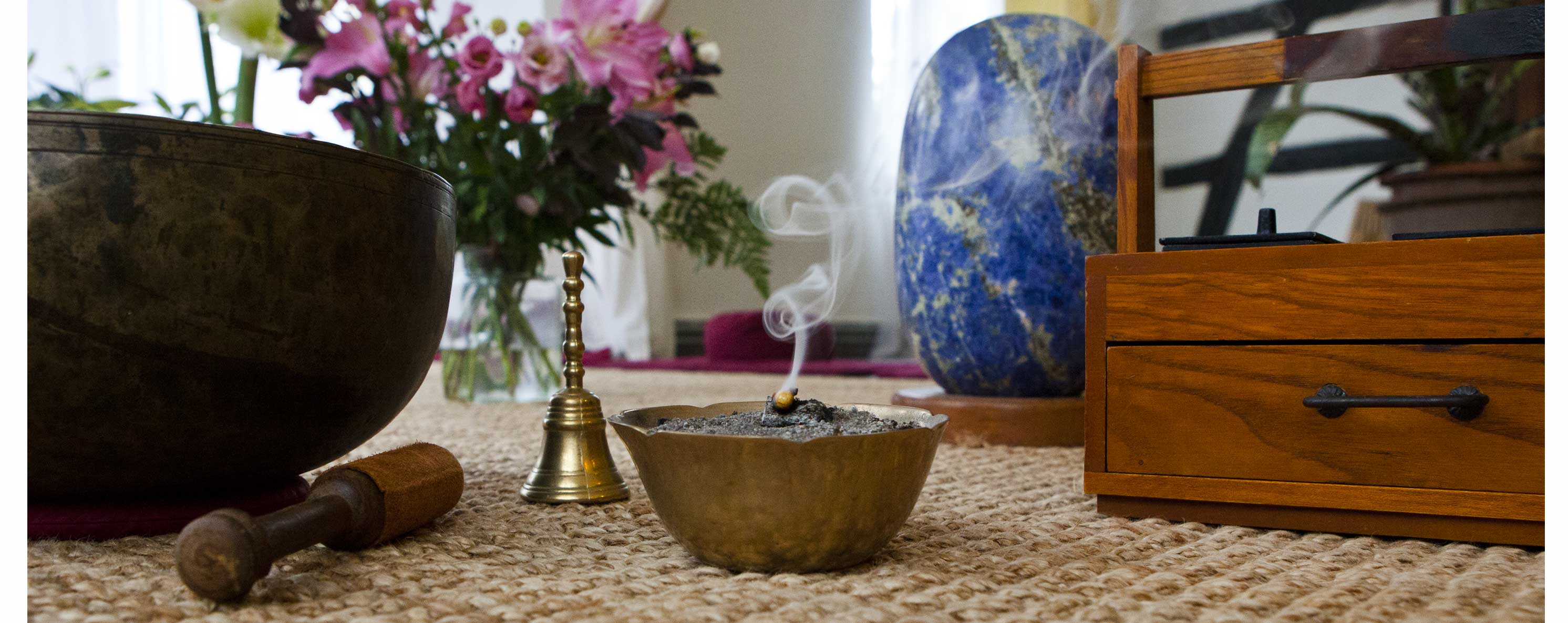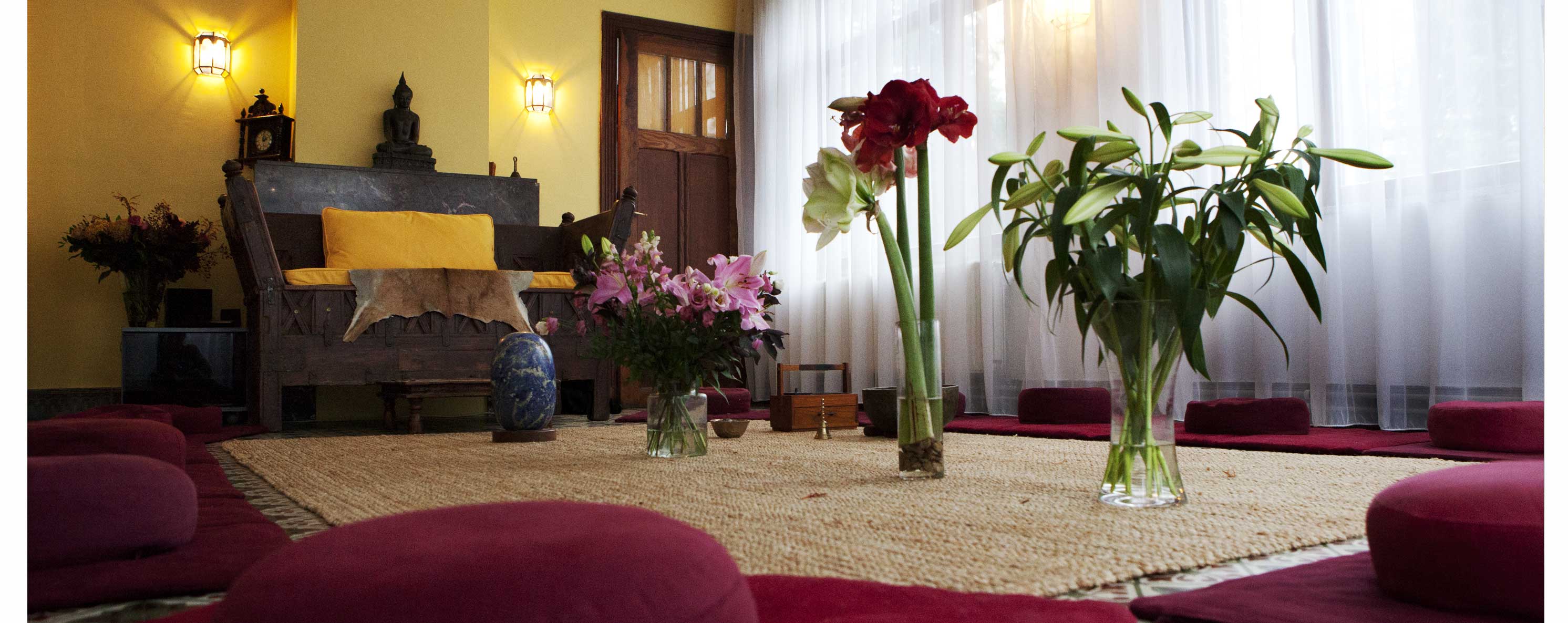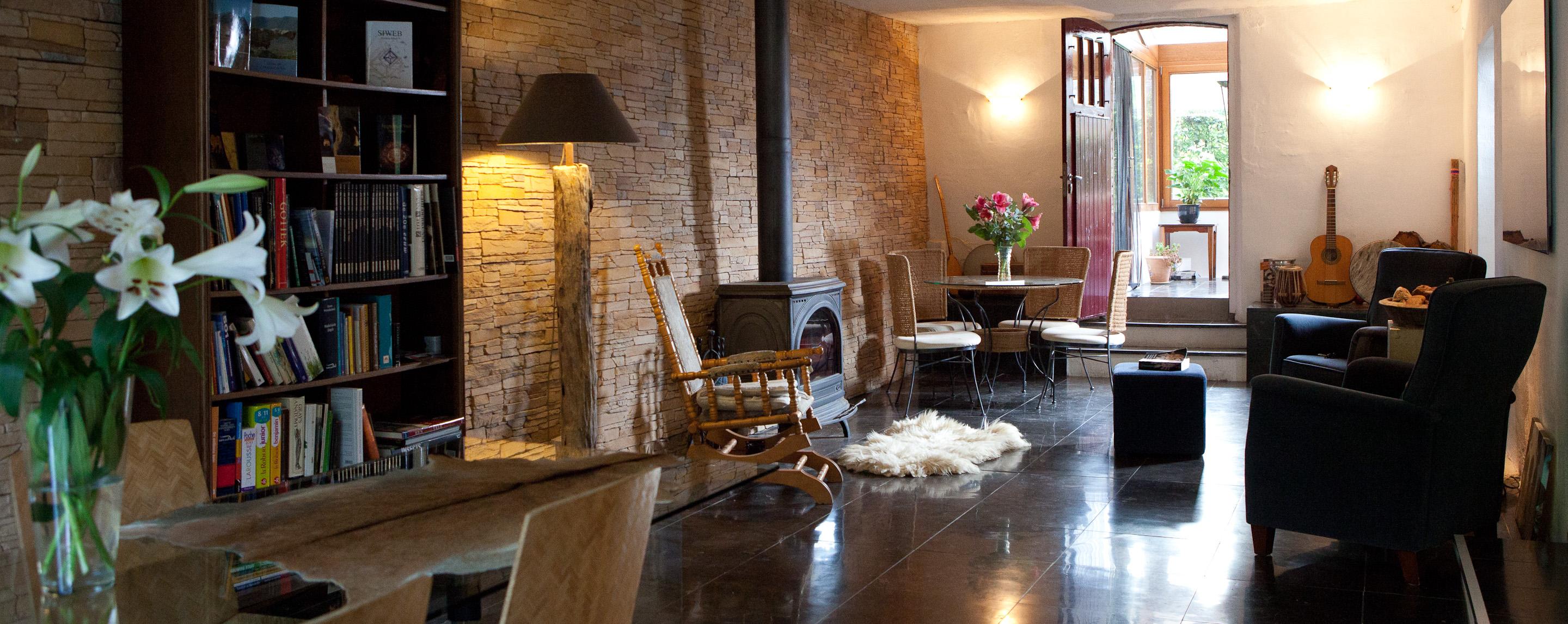Learning to meditate and practising it together
Both when visiting Asharum Amonines in general and more specific and comprehensive during our meditation training courses you will be introduced in the Nâm Meditation techniques.
Since meditation is not easy meditation techniques are helpful to attune ourselves and with that invite the meditative state. Our techniques are developed by Yoginâm, who himself lives in a profound state of meditation. Naturally, like no other, he knows what it takes to embrace such a state, and more importantly, what to avoid in this exploration.
By using these techniques consequently in daily life, one will inevitably notice a shift in attention to an all embracing state of being. This will happen in a natural way, gradually, that is living.
One cannot ‘force’ this transformation, but one can support and invite it by using the appropriate techniques.
The Breath Meditation
The Breath Meditation is our basic meditation method in which breathing is the key. This form can be learned by anyone using the natural breathing. For those who feel the longing to go deeper into meditation there is the possibility to receive The Breath which is a very powerful tool of Rememberence and our most important instrument for the spiritual endeavour. The purest form of the Breath Meditation is a period of silence with a bell anouncing the beginning and the end.
The Breath Walk:
During the Breath Walk you connect the Breath with walking. This adds an extra concentration to the meditation, which further limits the space for thoughts, because you move your focus even more. This helps to get into a silent state easier.
The Breath Walk is a powerful way to get into the here and now where all fields of experience can come more in harmony with each other and you become more and more aware of how you are connected to the world in which you share.
Asha* Meditation
Asha Meditation is a method in which the silence of the Breath Meditation is alternated with rhythm. Because it is especially in the beginning difficult to find this silent and all embracing state of meditation using rhythm is a proven way to find the more quiet and all embracing state of meditation faster.
*Asha means the natural flow of life. In Asha for example synchronicities happen naturally and awe and wonder and gratefulness are the foundations of our attitudes and behaviours. One can only tune into this natural flow and live in attunement with Asha when one’s inner rhythm, one’s inner attitudes and behaviours are and maintaines synchronised with this outer rhythm, the natural flow of life which then becomes a Guidance to live by.
By conducting these techniques together
Meditating with others will be more easily able to muster the intent to actually meditate. Therefore, meditating together can create a solid foundation for this exploration as well.
And gradually one becomes aware
That these two aspects inner and outer are just two parts of one and the the same coin, or differently said one becomes more aware of the all embracingness living is. A daily programme with Asha Meditation helps to find and maintain this synchronisation. Therefor the Breath- and Asha Meditation and the Breath Walk are important tools for attunement.
An introductory film on Asha Meditation:
What is a HarpMood?
When life is in line with its essence you open up for transcendental Awareness, which guides you to inspiration and spiritual healing.
In order to help people reach this transcendence, Yoginâm found a method, or rather the method found him, in which sound is the vehicle for inspiration, guidance and healing. The sounds that you hear from a harp resonate through you, they bypass the mind and connect with your transcendence. You just have to adopt an attitude of openness in order to experience its benefits.
HarpMood is therefore a form of communication beyond words. A communication between Yoginâm in a transcendental state of Being and your transcendental Being. With this, the sounds become an instrument to re-member what you really are, in essence.
HarpMood precedes a period of silence and is therefore a preparation for the silent state of meditation.
HarpMood is not a kind of spiritual background music to quieten the deliberations of mind and create a beneficial atmosphere for meditation. The sounds are the communication in which the resonance is exchanged. Therefore the experience of the tones of the HarpMood is different for everyone, because everyone is unique as a living human being.
Harp Mood really gives you a deep and grateful/intens/joy/beautiful/love(ly) Heart mood.
A grateful guest
You will find an explanation of the other meditations and instruments here.




